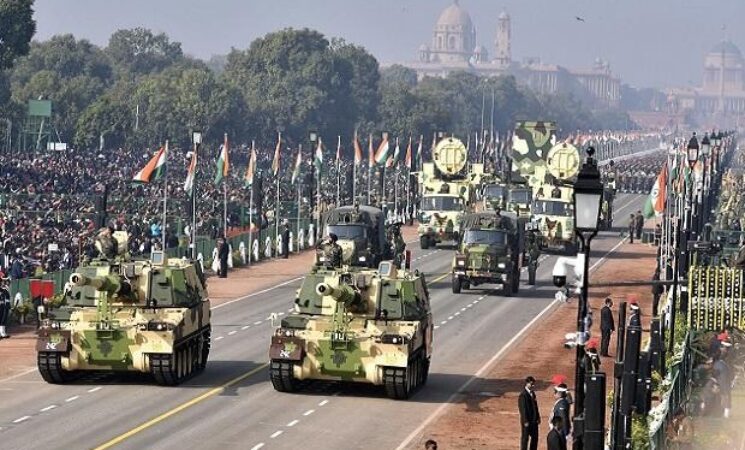10 February 2023, NIICE Commentary 8534
Dr. Manan Dwivedi and Shonit Nayan
Defence related acquisition of weaponry in the nation’s geopolitical and economic ecosystem happens to run through a hackneyed trajectory. Gone should be the days, when the acquisition of a weapons systems required a stately time period of around 10-12 years and by the time the weapons system was acquired, it ran the chance that the system would become redundant and obsolete. The Indian armed forces are a proud forerunner and a deft instrument for the sustenance and the enhancement of security and stealth of the nation. Thus, they deter the antagonist. Still apart from the hallowed valour and sacrifice narrative, the larger idiom of Defence in any nation is stiffly underlined by the calling of economics and the monetary aspect of it all. This year the Defence allocation stands at a quantum of an increment of INR 62,431 Crores (2022-23) to a kitty of 90,000 Crores in the 2023-2024 furlough which is a significant improvement.
The Press Information Bureau states that, “In keeping with the Government’s resolve and focus towards maintaining a high level of Operational Preparedness of the Defence Services to face current and future challenges, the Non-Salary Revenue/operational allocation gets a boost of INR 27,570 Crores, with the budgetary outlay under this segment augmented from INR 62,431 Crores in 2022-23 to INR 90,000 Crores in 2023-24. This will cater to sustenance of Weapon Systems, Platforms including Ships/Aircrafts & their logistics; boost fleet serviceability; emergency procurement of critical ammunition and spares; procuring/hiring of niche capabilities to mitigate capability gaps wherever required; progress stocking of military reserves, strengthening forward defences, amongst others.” The theme of modernization too has been delved inside with detail with the modernization outlay and the development of infrastructure outlay being augmented to 1.62 lakh Crores, which, is a 57 percent enhancement since 2019-20. The total defence outlay has seen an avid enhancement by 13 percent over the last few years’ outlays. One can also contend that some observers are rating the budget as bigger but not better. One of the bottlenecks happens to be the fact that there is an inherent incapacity in the Armed forces to utilise the larger segment of the defence outlay intertwined with the need to firm up the nation’s economy through the instrumentality of greater capital investment along with the dictum of strained Public Finances.
The Indian Navy has earned its collars once more by very diligently and cannily succeeding in making its acquisition share larger and better. An enhancement in localised R&D too can firm up the larger acquisition and the modernization imperatives. Also, as an attendant perspective there needs to be an equilibrium between the personnel expenses and the larger challenge of modernization and equipment maintenance. The trend in the past has been the hackneyed inclination to lay more of a stress on the personnel related expenditure and expenses which has a telling impact upon the odyssey of modernization in the Indian armed forces. Also, it can be cannily observed that the development of the military industry impact is premised upon the nascent and neophyte MIM, Military Media and Industry complex which might appear to be strikingly capitalist on the realist fence of the analysis and argument the multifaceted arraignment of the larger MIM establishment is in the offing in the near future. Thus, in order to facilitate the operational aspect of the Defence forces there is a need to pump in more money because if the state’s coffers do not provide the hike then there needs to be a change in the manner in which we aggress.
Low Defence budgets are a misstep in the larger context of the Chinese incursions on the tense border and their persistent poking in the nation’s territory. The argument - India was a poor country, and other human security sectors too need monetary embellishments, which might be arcane and a much stultified argument. Still, the present budget this furlough with its stress on self-reliance can serve as a nascent step towards removing too much of an import dependence. The main corpus of the budget still focuses upon the interests of the 1.5 billion odd personnel with the separate burden for retired personnel and war veterans. It has been reported in a Defence portal that, “This year, capital outlay meant for new weapons purchases for the Indian Air Force has been reserved for USD 7.43 billion; the Navy has been given USD 6.36 billion; and the Army has been allocated USD 4.28 billion. The Indian Air Force will spend most of the money to cover existing commitments for French Rafale fighters, Russian S-400 air defense systems, Apache and Chinook helicopters, and Israeli medium-range surface-to-air missile systems.” Deterring China is a major imperative which requires adequate strengthening of the coffers and allocations for Defence. Apart from the avowed emphasis on a war fought on the brass-tacks and fundamentals of technological up-gradation, the impetus finally has to emanate from larger outlays and smart utilisation.
Dr. Manan Dwivedi is an Assistant Professor of International Relations & International Organisation at the Indian Institute of Public Administration, New Delhi and Shonit Nayan is a Programme Fellow at India Smart City Fellowship Program, Ministry of Housing & Urban Affairs, India.

